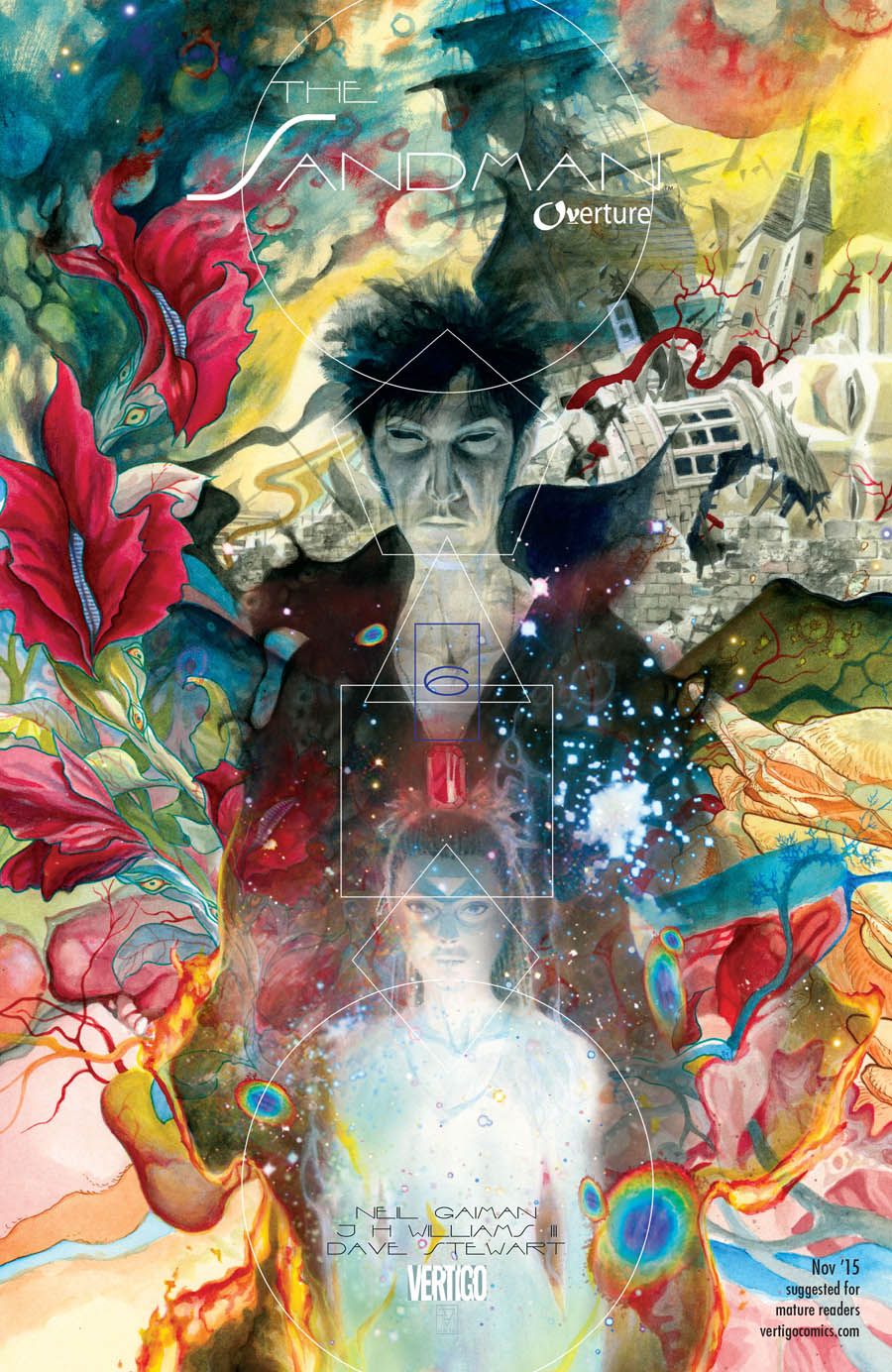"The Sandman: Overture" #6 might seem a tiny bit anticlimactic at first glance, but that's the nature of prequels. By this miniseries' very nature, Neil Gaiman, J.H. Williams III, Dave Stewart and Todd Klein need to put everything in place so that, when it's all said and done, "The Sandman" #1 can occur. The end result is a comic that ultimately rewards the reader with each new passage through its pages; once the "what will happen?" question is no longer hanging overhead, you can appreciate this comic's exquisite craft.
When you stop to think about it, we already know what happens here on some level. We know Dream defeats the vortex, and he's greatly weakened to the point it allows his capture in "The Sandman" #1. So, really, this isn't so much a question of what happens, but rather how it happens. Once you look at the comic from that angle, it's actually a very elegant solution.
Gaiman's story for "The Sandman: Overture" #6 works in part because of how truly dangerous it makes the vortex. In the "The Doll's House" storyline, we get a tiny glimpse of Rose Walker as a vortex as well as her ability to break down the walls between dreamers. In that storyline, Dream explains the dangers of a vortex and why he can no longer afford to ignore the creation of one. However, being told something is dangerous and actually seeing it in action are two very different things, and "The Sandman: Overture" not only creates an extremely lethal force in the form of a vortex but makes it crystal clear just how difficult it is to destroy one that's fully formed. For those who come to "The Sandman" via this miniseries, Gaiman lays out just how deadly Rose can become and how critical her destruction is in Dream's eyes. This is, after all, a phenomenon that destroys entire galaxies.
With that in mind, long-time fans (who will no doubt be the majority of this comic's readership) will be pleased an existing part of the series' mythology is used to defeat the vortex. It's interesting to look at what led up to this point and see how Gaiman carefully arranged the pieces to make this possible; it's something we've known about for a very long time but never seen used until now. That said, for those who eventually do enter "The Sandman" by this miniseries, the lack of a strong explanation on how and why this works might be confusing. It's understandable, because it's explained in such detail later in the series that it would be redundant to walk everyone through it again. Ultimately, it's an elegant solution and one that gives it an appropriate amount of power.
A lot of that strength comes from Williams and Stewart, who bring the struggle to life in the pages of "The Sandman: Overture" #6. Watching the stopping and restarting of everything works because of the careful placement of every single figure, every little line on the page. Dream's tortured expression and body as the blackness surrounds him is attention-grabbing, and the explosion of color and form two pages later is arresting. Look how carefully Williams and Stewart create that spread, starting with the void, then moving from indigos and blues into the full spectrum, even as Dream's face smears across the page while the Ship erupts into flames. It's a heart-stopping moment given all the appropriate punch.
Really, this shouldn't be surprising. Every page of "The Sandman: Overture" #6 is perfectly crafted. For example, Hope's descent into the depths of the Ship works in part because of how Williams lays it out. With realities colliding in its desks, the concentric circles showing the overlapping worlds is truly elegant. Hope's form moves from one world to the next while staying whole; the structure's details shift from one panel to the next but the overall form is constant. It's even more impressive on the next two pages, with Stewart's colors erupting into brilliant hues while Williams' inventiveness creates so many different forms and shapes you could study this spread alone for hours. From light breezy painted forms to blocky Jack Kirby-inspired structures, there's so much to take in here. Every time you think you know what Williams has planned next, he surprises by switching. The sequence with Delirium, for example, is not only wonderfully chaotic but also comes right after some of the most rigidly laid out pages in the comic, a not-so-subtle reminder Williams has many tricks up his sleeve.
"The Sandman: Overture" #6 is a comic that's just stronger and stronger with every re-read. From a perfect mimicry of Dream's capture in "The Sandman" #1 to the cat version of Dream's importance to the story, there are so many little bonuses strewn throughout the comic it would be easy to simply sit back and list them. In the end, "The Sandman: Overture" #6 is a celebration of the series that enchanted so many readers as well as a thoroughly-enjoyable new chapter to complement rather than recreate those comics. Gaiman, Williams, Stewart and Klein should be proud of what they've created here; when revisiting an old property, it would be a dream come true if all attempts were this strong.

